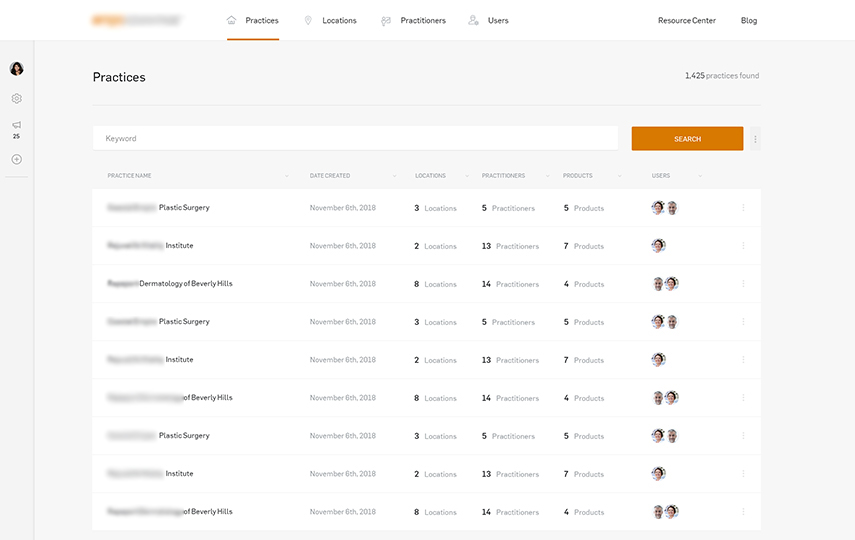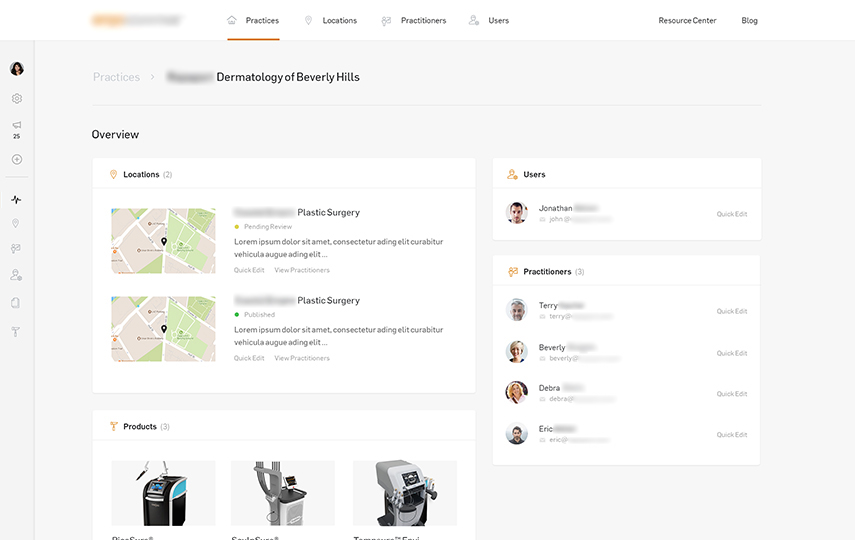

Services: DevOps Assessment , Developer Toolkit Creation , Infrastructure as Code
At a Glance
During a period of rapid growth, a medical device company was experiencing reliability and scalability challenges with its customer engagement platform. The company’s ability to support its customers and partners was undermined by the mounting technical debt of its old platform. With a strong sense of urgency around improving their customers’ experience, the company reached out to Convertiv for help. Convertiv centralized six unmaintained, location data services, to a single robust API. By consolidating this sprawling infrastructure, we could deliver better data, a sharper user experience across consuming platforms, and significantly reduced the maintenance burden.


The companies’ web-based engagement platform is critical to their go-to-market strategy. It enables partners to market products effectively and connect with prospective customers in their designated geographic territory. The legacy platform consisted of a customized content management system (CMS) and a large collection of API-driven services supporting various sales and customer support functions.
The platform became a key business enabler and critical liability as the company grew due to frequent downtime and crisis-driven feature additions that were too slow to materialize. Eventually, a degrading user experience and escalating drain on resources made the situation untenable.
The company engaged Convertiv to stabilize the existing platform, design, and transition to a reliable replacement that would help them support their customers long into the future. Moreover, the company was focused on its customers and therefore prioritized improving their experience above all other efforts. Convertiv used the following approach to meet this need.
Stabilize the legacy application.
With limited visibility into the operational health of the existing platform, our DevOps team integrated additional instrumentation and monitoring tools. Adding these tools to the legacy platform enabled our team to capture real-time data points across the entire system, enabling the team to proactively resolve reliability issues before they became a larger problem. The additional benefit was understanding usage patterns and performance bottlenecks, which informed the creation of the new platform.
Build a new backend architecture.
Convertiv extensively documented the legacy platform, visualizing data objects, flows, and consuming services. This understanding was foundational toward realizing one of the project goals: have the customer-facing part of the new platform roll out before any of the back office/administrative features. That meant the supporting teams would leverage parts of the legacy platform while their customers enjoyed the new experience.
Convertiv consolidated the scattered services into a REST API that new frontend applications could securely consume. The new platform was rolled out to a cloud provider, utilizing a scalable, containerized architecture and infrastructure as code. The continuous deployment approach enabled individual feature releases, sometimes multiple times a day.
Design an intuitive, unified interface to reduce customer service burden.
We built a new web-based user interface with a clear visual language and improved user experience. The new interface brought the service team, partners, and customers onto a single platform that facilitated their interactions. Convertiv carefully modeled each user persona and focused on making their journey efficient and frictionless as they ordered supplies, marketed their services, and learned new things about their equipment.
The new web frontend was built using reactive components, type safety, and centralized state management. The goal was for the application to feel snappy, stable, and easier to maintain and troubleshoot.
Engineer a transition from the legacy platform.
The phased rollout approach meant that customers and various company teams would utilize different platforms while interacting. One feature of the new API was a bridge between the next-gen and legacy databases. As the customers were enjoying their new experience, the company supporting teams collected their feedback and, with the help of Convertiv, took the time to reimagine their own workflows and approaches.
Once we incorporated the new administrative interfaces into the application, the bridge was severed, and the legacy application was retired.
99.9968% uptime – Before our engagement, the legacy system was experiencing several hours of downtime per month. Our instrumentation gave us the deep visibility needed to improve and eliminate critical performance bottlenecks proactively. The new platform has recorded 99.9968% uptime since the launch of the first phase.
60% reduction in time-to-MVP – The transitional system we engineered accelerated the initial launch timeline for the platform by 60%, delivering significant improvements and risk mitigation measures to the company faster than they anticipated.
Improved adoption rates and operational efficiency – The user experience improvements we made increased platform adoption and reduced customer service and training burden significantly. We continue to work closely with the customer service staff, evolving the platform as needed to meet emerging needs quickly thanks to its nimbler architecture.
Enabled global expansion – Building on the new platform’s momentum in the U.S. market, we added features to support internationalization, allowing the European and Asian sales teams to use the platform to support their international customers in their own language.
This use case is an excellent example of business and engineering teams working towards the same goals and priorities to achieve great customer outcomes.
reduced time-to-MVP
system uptime
Every new development project should start with both clear goals and a clear plan for how it will be operationalized. Bringing the full project pla...